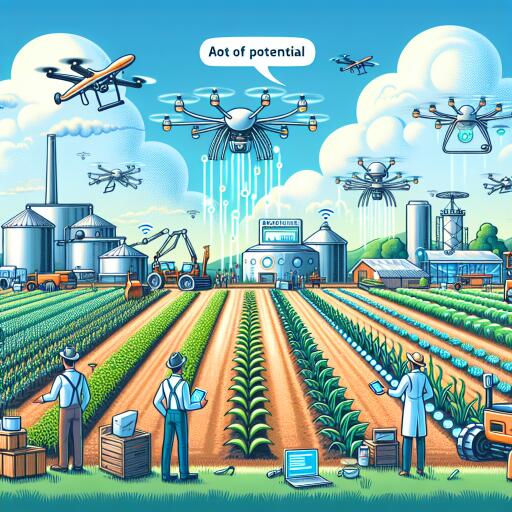US Agriculture Industry Tests Artificial Intelligence: ‘A Lot of Potential’
The 1930s marked a peak for American farming with around 6.8 million farm operations, each averaging 155 acres. Fast forward nearly a century later, and the landscape has dramatically shifted — the number of farms has decreased to about 1.9 million in 2023, with the average farm now sprawling across 464 acres. Agricultural practices have evolved, and experts are increasingly confident that artificial intelligence (AI) could enhance food production efficiency and speed for farmers and producers.
“There’s immense potential not just to boost productivity in crop cultivation but also to minimize resource usage. By analyzing data, we can increase yields and enhance nutritional value. AI also stands to significantly alleviate labor shortages,” explained Mason Earles, an assistant professor at UC Davis involved with the AI Institute for Next Generation Food Systems (AIFS).
Labor shortages have been a pressing issue, with data revealing that in 2018, 41% of farmers reported shortages — a stark rise from 14% in 2014. The Bureau of Labor Statistics predicts this trend of declining agricultural workers to continue through 2033, highlighting the need for innovative solutions like AI to maintain consistent productivity levels.
Ilias Tagkopoulos, a computer science professor at UC Davis and the director of AIFS, further emphasized, “AI empowers existing workers, boosting productivity without completely overturning traditional agricultural practices.”
AIFS is financially supported through a USDA grant aimed at further exploring AI’s applications in agriculture. The institution is part of a broader USDA initiative seeking to advance AI’s role in food systems and production, encompassing various food types from vegetables and fruits to nuts and meats.
According to recent USDA studies, only 27% of farmers currently employ emerging technologies such as AI. However, with investments projected to rise from over $2 billion this year to more than $5 billion by 2028, the scenario is set to transform rapidly.
“Our vision is a healthier society and a more sustainable planet. By leveraging AI, businesses not only enhance productivity but also innovate by focusing on what’s crucial,” added Tagkopoulos.
Research is underway to optimize how AI-powered devices, such as sensors and robotics, can more effectively amass essential data in agricultural environments. As Earles pointed out, “AI’s power lies in its ability to quickly process vast data sets to achieve superior pattern recognition performance.”
This capability allows farmers to make informed decisions regarding fertilizer applications and optimal harvesting times, significantly improving crop yields.
There’s an exciting endeavor at the University of Arkansas, exploring the use of virtual reality to process poultry. The project investigates the potential for robots to operate under worker supervision virtually, promising a reduction in labor demand despite high equipment costs.
“The challenge is to make this technology cost-effective and practical,” noted Tagkopoulos. Indoor farming or controlled environments also confront high initial costs, although studies suggest they could achieve higher yields by minimizing weather-related issues and enabling year-round cultivation.
Tagkopoulos further shared, “In the future, more data will be generated, and AI tools will become more affordable and accessible, offering farming recommendations on irrigation, planting, and market timing. This promotes collaboration among farmers, shifting the focus from competition to mutual success.”
The USDA recently embarked on a promising project at Cornell University to research grapes. The National Grape Improvement Center aims to assist scientists in studying climate-resilient grape varieties and developing strategies for growers.
“Utilizing AI to enhance the growth of crops in otherwise unviable areas presents enormous opportunities for delivering fresh and nutritious foods to both urban and rural communities. AI can help us optimize these controlled environments to maximize outputs,” concluded Earles.









